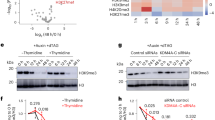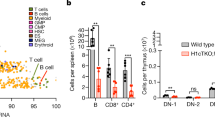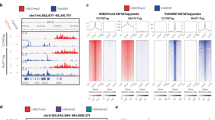Abstract
We show here that recombination occurs at the normal rate in compound female mice containing two different complementing lethal haplotypes (th17/tw12 where there is a long stretch of homologous t-mutant chromatin. Thus the recombination suppression of a complete t-haplotype cannot be due to an intrinsic factor(s) which suppresses along the length of its own chromosome but is due to ‘mismatching’ of wild-type and mutant chromatin. Naturally occurring t-haplotypes of mouse chromosome 17 have several interesting genetic properties. First, they are always transmitted from males in much higher proportions than mendelian expectation; presumably this accounts for the maintenance of lethal and semilethal t-haplotypes at polymorphic levels in populations of wild mice, t-Haplotypes also show recombination suppression. The conventional map distance between genetic markers T and tf is 7–12 cM, whereas in (t/+) heterozygotes for naturally occurring t-haplotypes, recombination is suppressed and T and tf seem to be separated by only 0.1–0.5 cM (ref. 1). The region of recombination suppression extends to and includes the major histocompatibility complex (H–2)2. Thus t and H–2 effectively travel as a single unit— a ‘super gene’3. Although recombination suppression is known to be accompanied by failure of chiasmata formation4, the mechanism underlying the suppression has remained an enigma. Lyon suggested a disorder of t-heterochromatin5 and more recently a change in ‘intercalary’ middle repetitive DNA6. She proposed that either t-chromatin is intrinsically incapable of participating in crossing-over, or chiasma formation is prevented because of mismatching and mispairing of normal and abnormal chromatin. We have measured recombination between two chromosomes which carried extensive overlapping segments of t-chromatin. We report here that in this configuration, recombination occurs at a normal rate, and thus we conclude that cross-over suppression is due to mismatching.
This is a preview of subscription content, access via your institution
Access options
Subscribe to this journal
Receive 51 print issues and online access
$199.00 per year
only $3.90 per issue
Buy this article
- Purchase on SpringerLink
- Instant access to full article PDF
Prices may be subject to local taxes which are calculated during checkout
Similar content being viewed by others
References
Bennet, D., Dunn L. C. & Artzt, K. Genetics 83, 361–372 (1976).
Hammerberg, C. & Klein, J. Genet. Res. 26, 203–211 (1975).
Snell, G. Folia biol., Prague, 14, 335–358 (1968).
Forejt, J. Folia biol., Prague, 18, 161–170 (1972).
Lyon, M. F. & Meredith, R. Heredity 19, 301–339 (1964).
Lyon, M. F., Evans, E. P., Jarvis, S. E. & Sayers, I. Nature 279, 38–42 (1979).
Bennett, D., Artzt, K., Cookingham, J. & Calo, C. Genet. Res. 33, 269–277 (1979).
Lyon, M. F. & Bechtol, K. B. Genet. Res. 30, 63–76 (1977).
Silver, L. M., White, M. & Artzt, K. Proc. natn. Acad. Sci. U.S.A. 77, 6077–6080 (1980).
Lyon, M. F. & Mason, I. Genet. Res. 29, 255–266 (1977).
Dunn, L. C., Bennett, D. & Cookingham, J. J. Mammal. 54, 822–830 (1973).
Author information
Authors and Affiliations
Rights and permissions
About this article
Cite this article
Silver, L., Artzt, K. Recombination suppression of mouse t-haplotypes due to chromatin mismatching. Nature 290, 68–70 (1981). https://doi.org/10.1038/290068a0
Received:
Accepted:
Published:
Issue date:
DOI: https://doi.org/10.1038/290068a0
This article is cited by
-
Meiotic drive in house mice: mechanisms, consequences, and insights for human biology
Chromosome Research (2022)
-
The cld mutation: narrowing the critical chromosomal region and selecting candidate genes
Mammalian Genome (2006)
-
A Robertsonian translocation suppresses a somatic recombination pathway to loss of heterozygosity
Nature Genetics (2003)
-
Limits of the distal inversion in the t complex of the house mouse: Evidence from linkage disequilibria
Mammalian Genome (1991)
-
A long story and a short tail
Nature (1990)



